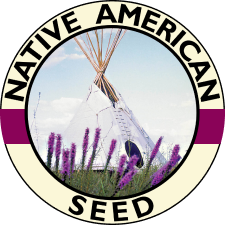This perennial reaches a height of 2 feet, grows in shade to full sun, and blooms from April through June. It likes well drained soils of sand, loam, clay, or limestone. The large flower heads make a striking appearance at 2 to 3 inches across. Herbalists seek after the roots and other healing parts of this plants for use in teas and tinctures to enhance the immune system. All Purple Coneflowers are a good source of nectar for butterflies such as the Red Admiral shown in the photo above. Plant them in masses for the best effect.
The Natives are Friendly
Many of us are familiar with the Purple Coneflower Echinacea purpurea. It is the pink one in the local nurseries and found readily available by seed. It is also one that has been the most hybridized for the retail garden market. The other purple coneflower that is often overlooked is Echinacea angustifolia. There are nine varieties of purple coneflower altogether but E. angustifolia, E. purpurea, and E. pallida are the three varieties of purple coneflower that are the medicinal powerhouses of herbal medicine. Echinacea is a perennial species belonging to the Aster family and are native to North America. Every North American Indian tribe that was aware of the plant had many medicinal uses for Purple Coneflower depending on which variety grew nearby. The secret of this amazing root was revealed to the Native peoples by observing sick or wounded elk digging up and eating the plants, roots and all, because of this behavior Purple Coneflower was known as elk root. Other common names used for E. angustifolia are Narrow-leaved Purple Coneflower, Black Sampson, Kansas Snakeroot and Narrow-leaf Echinacea. Traditionally this plant was used to treat everything from sore throats & coughs, and snake bites, to cancers. Today it is widely used as an immune stimulant for colds and flu.
It is interesting to note that these same varieties E. purpurea, E. angustifolia, and E. pallid are the most sought after for ornamental plants in gardening and prairie restoration. E. angustifolia tolerates a wide range of conditions from dry to moist soils and from clay to loam to rocky or sandy soils. It is more drought tolerant than E. purpurea and seems to thrive in gardens where it gets a little extra care. It is a must for any butterfly garden acting as a nectar source from May into July. Goldfinches love the mature seeds if you can resist the urge to dead head or use the flowers for arrangements. So whether you have good luck, bad luck or no luck at all with other Echinaceas, the unique Narrow Leaf might be the Purple Coneflower for you.





















